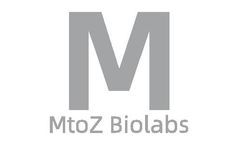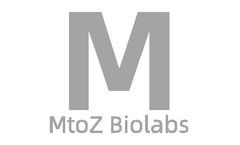Refine by
Drug Delivery Articles & Analysis: Older
148 articles found
Among the most promising strategies in this endeavor are the use of tumor models for breast cancer and the development of customized antibody-drug conjugates (ADCs). These advancements not only enhance our understanding of the disease but also pave the way for more targeted therapeutic solutions. ...
Additionally, advancements in ocular drug delivery systems have emerged from the study of corneal epithelial cells. ...
Biomedical Applications: Some copolymers are biocompatible and can be used in drug delivery systems or tissue engineering. Conclusion The making of copolymers is a sophisticated process that combines chemistry and engineering to create materials with tailored properties for diverse applications. ...
In the ever-evolving world of pharmaceutical development, the quest to innovate and improve the delivery of drug substances remains a top priority. Among the many formulation strategies, oral liquid formulations hold a special place, offering alternatives particularly appealing for specific populations and addressing unique formulation challenges. ...
Alfa Cytology has introduced its advanced drug development services for brain tumors. Alfa Cytology, celebrated for its cutting-edge biotech solutions and extensive tumor research expertise, has recently introduced brain tumor drug development services, designed to empower researchers in understanding the intricacies and unique challenges associated with brain ...
Role of Liposomes in Drug Delivery The structure of liposomes, consisting of an aqueous core enclosed by a lipid bilayer, allows for the encapsulation of both hydrophilic and lipophilic drugs. This versatility, coupled with their biocompatibility and biodegradability, makes liposomes an attractive vehicle for drug ...
Precision-Cut Lung Slices (PCLS) have emerged as a innovative ex vivo model that allows researchers to explore deep into lung physiology, disease mechanisms, and pharmacological responses. By offering a unique combination of biological complexity and controlled experimental conditions, PCLS serve as a critical bridge between the limitations of traditional in vitro cell cultures and the ...
In addition, peptidomimetics can disrupt or potentiate interactions between proteins, which may be useful in the treatment of related diseases. In terms of targeted drug delivery, peptidomimetics can achieve target specific cells or tissues in the body. When peptidomimetics are conjugated with targeted antibodies or ligands, they can deliver ...
In the process of new drug development, the study of pharmacokinetics is of great significance. The result can be used to guide the screening and development of drugs, and support the evaluation of their safety and the design of clinical drug delivery protocol. ...
Biotechnology and Research: - Model antigen in immunology studies - Carrier protein for drug delivery systems - Standard protein in various analytical techniques 3. Pharmaceutical Industry: - Excipient in drug formulations - Component in vaccine development - Potential therapeutic agent in certain medical conditions 4. ...
Polyethylene glycol (PEG) derivatives have become pivotal in the pharmaceutical industry, revolutionizing drug delivery systems and enhancing the efficacy of various therapeutic agents. ...
They are widely used in the pharmaceutical and biotechnology industries for drug delivery, controlled release systems, and other applications due to their unique properties and versatility. ...
CD can differentiate the different chiral forms (enantiomers) of drugs, which is critical to ensuring drug safety and efficacy.2. Study of Drug and Target Molecule InteractionsCD can be used to analyze the binding mode of drugs to their biological targets (such as proteins, nucleic acids, etc.). This information aids in ...
Meanwhile, recombinant collagen used for cosmetics or drug delivery systems may be designed with a lower molecular weight (e.g., 30 kDa to 90 kDa) for ease of skin absorption or to achieve specific biodistribution.Determination of Molecular WeightThe determination of the molecular weight of recombinant collagen typically uses the following techniques:1. ...
Biomedical ResearchIn tissue engineering and regenerative medicine, understanding the molecular weight of collagen helps design suitable biomaterials.2. Drug DevelopmentInformation on the molecular weight of collagen is crucial for developing strategies that use collagen as a drug delivery carrier.3. ...
The development of nanobody-based drug delivery systems began with the discovery of camelid antibodies in the early 1990s. ...
These specially sized polymers are designed to improve the stability and delivery of proteins and peptides in drugs. They are essential for Antibody-Drug Conjugate (ADC) linkers, Proteolysis Targeting Chimeras (PROTAC) linkers, and PEGylated proteins and peptides. ...
Dendrimers have attracted much attention in drug delivery, imaging, and materials science due to their unique structure, high monodispersity, and tunable properties. ...
Introduction In the ever-evolving landscape of drug delivery systems, nanoformulation stands out as a revolutionary approach. Nanoformulation leverages nanotechnology to create drug delivery systems that can improve the efficacy, reduce side effects, and precisely target disease sites. ...
By automating the exploration of this multidimensional parameter space, AI can help researchers rapidly identify the optimal processing conditions to achieve the desired material properties, such as molecular weight, mechanical strength, or drug-loading capacity. This AI-driven approach to materials synthesis optimization is particularly valuable in the context of biomaterials, ...














